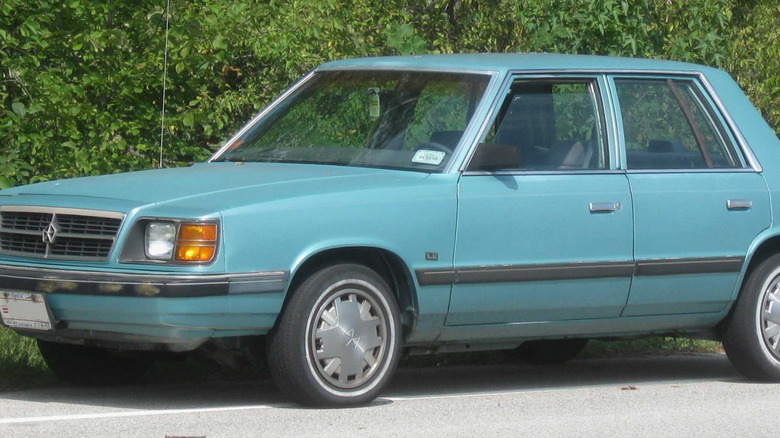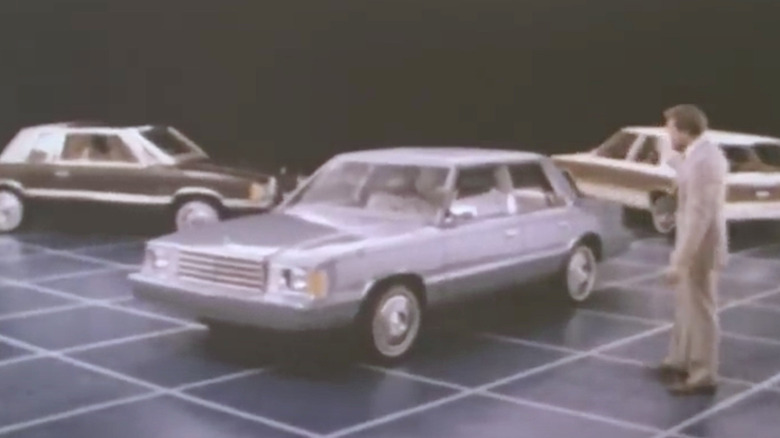What Does The K Stand For On Chrysler K-Cars?
If you've been keeping track of automotive news in the past year or so, you know that U.S. Automaker Chrysler is in a tough spot. Its parent company, Stellantis, continues to face serious financial struggles, and while Stellantis claims that it has no plans to kill off or sell Chrysler, one has to imagine that could change if times continue to be tough for the company.
Of course, this is hardly the first time Chrysler itself has faced such troubles, with the brand narrowly surviving the 2008 financial crisis through a merger with Fiat. However, when the company faced financial troubles in the early 1980s, Chrysler was ultimately able to save itself by releasing a successful run of new cars that were essentially based on the same platform. Those vehicles would be dubbed K-Cars in Chrysler's marketing materials, with the company boasting that the vehicles were the product of years of development, as well as a rash of technological advancements and some serious design ingenuity.
Upon their 1981 release, gearheads and everyday consumers alike were no doubt curious about what the K in K-Cars actually stood for. More than 40 years later, many people still do not know what that K actually stands for, and we'd wager that one and all will be a touch disappointed to learn it doesn't really stand for anything. Instead, K is just the letter designation assigned by Chrysler to the platform on which the vehicles were built.
[Featured image by IFCAR via Wikimedia Commons | Cropped and scaled | Public Domain]
K-Cars were a legit game-changer for Chrysler
For a point of reference, the platform and vehicles that directly preceded K-Cars in the Chrysler lineup were called L-Cars. Despite the ' alphabetical designations, the K-Car was far from a step backward for Chrysler, with the company and then boss, Lee Iacocca, instead eyeing the vehicles as a necessary pivot from the smaller L-Car towards a line of fuel-efficient, front-wheel drive mid-size builds that focused on performance and comfort.
Over its production run, the K-Car platform would prove both inexpensive to make and incredibly versatile, with Chrysler shaping and reshaping it for more than a decade to produce builds of every shape and size across several of its then subsidiaries, including Dodge and the now defunct Plymouth badge. When the platform debuted in 1981, there were just a pair of options available on the K-Car platform in the Plymouth Reliant and the Dodge Aries. Once those vehicles hit showroom floors, both builds were popular with consumers, reportedly accounting for 36% of vehicles sold under the greater Chrysler shingle.
Those sales figures continued to grow over the ensuing years and eventually led Chrysler back from the brink of financial ruin. Emboldened by the success of the K-Car, bosses at Chrysler Corporation continued to lean on the platform in several other builds, including the Chrysler Le Baron, the Dodge 400 and 600 models, and even the revival-ready Chrysler Executive Limousine. The K-Car platform also served as the base for the O.G. Dodge Caravan. Successes aside, Chrysler eventually moved on from the platform in the mid-1990s, with the turbo-charged Dodge Spirit and Plymouth Acclaim closing out the line in 1995.

